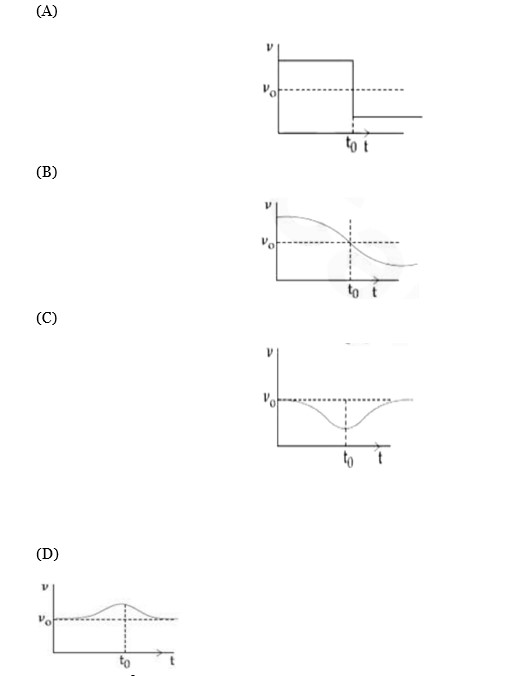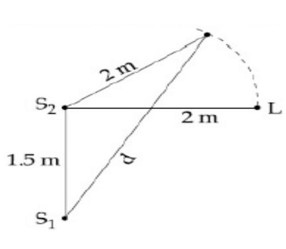Physics Wave Optics
Get insights from 101 questions on Physics Wave Optics, answered by students, alumni, and experts. You may also ask and answer any question you like about Physics Wave Optics
Follow Ask QuestionQuestions
Discussions
Active Users
Followers
New answer posted
2 months agoContributor-Level 10
While approaching: v = v? (c / (c - vcosθ)
While receding: v = v? (c / (c + vcosθ)
New answer posted
2 months agoContributor-Level 10
Initially S? L = 2m
S? L = √2² + (3/2)²
S? L = 5/2 = 2.5 m
? x = S? L - S? L = 0.5 m
So since λ = 1 m. ∴? x = λ/2
So white listener moves away from S? Then? x (= S? L − S? L) increases and hence, at? x = λ first maxima will appear.? x = λ = S? L − S? L.
1 = d - 2 ⇒ d = 3 m.
New answer posted
2 months agoContributor-Level 10
For minima
(given)
So for minima is
(from equation (i)
(from sin table)
.
New answer posted
2 months agoContributor-Level 10
The distance between two successive bright fringes is fringe width .
New answer posted
2 months agoContributor-Level 10
which is 0.707
So, and so only one option is correct i.e.
Angle rotated should be .
New answer posted
2 months agoContributor-Level 10
Since speed of light is constant for all colour so red colour and blue colour have different frequencies and different wavelengths.
New question posted
2 months agoNew answer posted
2 months agoContributor-Level 10
β = λD/d or β ∝ λ
Also, we know that λ_blue < _orange
So, β_orange > β_blue
So, dist b/w consecutive fringes will decrease.
New answer posted
2 months agoContributor-Level 10
v = 1/√με = 1/√ (µ? µ? ε? ε? ) = c/√ (µ? ε? )
v = 3*10? / √ (1*81)
v = 3*10? / 9 m/s
= 0.33 * 10? m/s
= 3.33 * 10? m/s
Taking an Exam? Selecting a College?
Get authentic answers from experts, students and alumni that you won't find anywhere else
Sign Up on ShikshaOn Shiksha, get access to
- 65k Colleges
- 1.2k Exams
- 679k Reviews
- 1800k Answers



